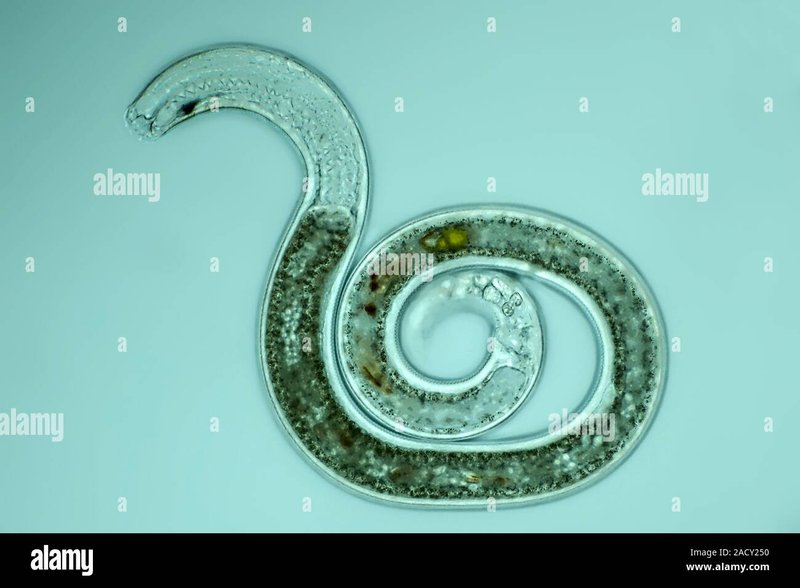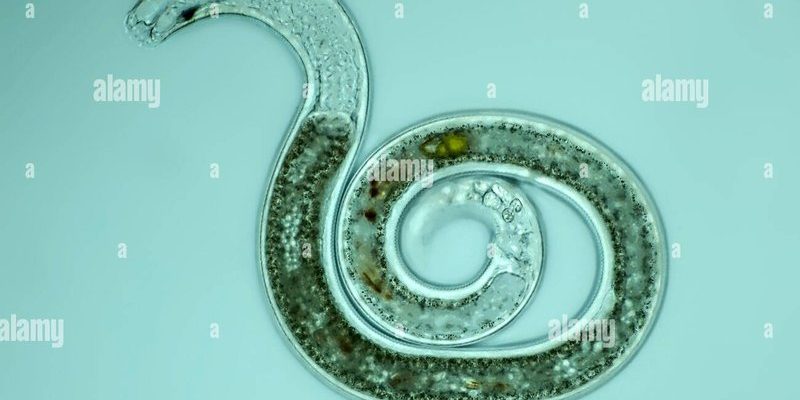
Field cameras simplify the process of studying organisms that are typically hidden from plain sight. They provide insights into the roundworms’ movements, feeding habits, and interactions with their environment. And the best part? You get to watch nature unfold as it happens, kind of like a nature documentary playing out right in your backyard.
Why Study Roundworms?
You might be wondering, why put so much effort into observing something so small? Roundworms, or nematodes, are vital players in the soil ecosystem. They help decompose organic matter, improve soil structure, and even control pest populations. Without them, the balance of our ecosystems would be off-kilter. By understanding their behavior, we can learn more about soil health and, in turn, plant growth.
Moreover, some roundworm species are used in scientific research and medicine. For instance, *Caenorhabditis elegans* is a model organism in genetics and developmental biology. By studying these creatures in their natural setting, scientists can gather valuable data that may lead to groundbreaking discoveries. So, when you think about it, observing roundworms can shed light on much bigger scientific questions.
Setting Up Field Cameras for Roundworm Observation
Now, how do you go about setting up a field camera to observe these slippery little guys? First, you’ll need to choose a suitable camera. Many researchers prefer trail cameras, like the Browning Strike Force, for their motion-sensing capabilities. These cameras can capture images and videos when roundworms or any other movement is detected nearby.
To get started, pick a location rich in organic matter, like a compost pile or a garden bed. Position the camera close to the ground, as roundworms live in the soil. Ensure it’s securely fastened and not obstructed by plants or debris. Most cameras will require some batteries, so check that they’re charged and ready to go. After setting it up, you’ll want to sync the camera with your smartphone or a computer to easily access and view the captured footage later.
Understanding Roundworm Behavior Through Video
Once your camera is set up, it’s time to watch the magic happen. The footage can reveal a treasure trove of information about roundworm behavior. You might notice how they navigate through soil, interact with other organisms, and even their feeding patterns. This is where the beauty of field cameras shines—offering insights that would be impossible to obtain through traditional observation methods.
For example, you might capture them responding to moisture levels in the soil or how they react to changes in temperature. These observations can help scientists understand how roundworms contribute to soil health and fertility. Seeing their behavior play out in real-time can be both exciting and enlightening, giving you a deeper appreciation for these tiny creatures.
Technical Tips for Effective Documentation
When documenting animal behavior, especially that of roundworms, there are a few technical tips to keep in mind. First, ensure your camera is set to the right mode. Most modern trail cameras have options for different conditions, such as low-light settings and different resolution levels. Choose one that best suits the environment you’ll be monitoring.
Also, consider the recording length. Longer video recordings can be useful, but they take up more storage space. Check your camera’s specifications to find a balance that works for you. And don’t forget about the battery life; make sure you have spare batteries or a way to recharge them in the field.
Lastly, if you’re planning to review the footage regularly, consider setting a schedule to check on the camera. This will help you stay updated on any interesting findings and also ensure the camera remains in good working order.
Analyzing Your Findings
Once you’ve gathered footage, the next step is analyzing what you’ve recorded. This can be one of the most thrilling parts! Grab some popcorn and settle down, because reviewing hours of footage can lead to exciting discoveries. Take notes on interesting behaviors you observe—like how roundworms avoid certain substances or how they interact with plant roots.
When analyzing your footage, it’s helpful to have a specific focus. Are you looking at their feeding habits, mating behaviors, or responses to environmental changes? Narrowing down your focus can make your observations much more organized and insightful.
Additionally, sharing your findings with fellow enthusiasts or scientists can lead to valuable discussions and collaborations. You might find that others have observed similar behaviors or have insights to share. Who knows, your footage could contribute to a larger understanding of soil ecology!
Challenges in Observing Roundworms
While field cameras are excellent tools, they come with their own set of challenges. For starters, roundworms are tiny, and their movements in soil can be difficult to capture. You may end up with lots of footage of empty dirt or other organisms, which can be disheartening. But here’s the thing—patience is key!
Another challenge is the setup itself. Weather conditions, battery life, and camera settings can dramatically impact your results. You may have to experiment a bit to find the perfect angle and settings. Don’t be discouraged by setbacks; each attempt is a learning experience that will improve your future observations.
Lastly, there’s the potential for interference by other animals or natural events. Animals like birds may see your camera and investigate, leading to false alarms in your recordings. Embrace the unpredictability! The unexpected moments can lead to fascinating findings about the surrounding ecosystem as well.
The Impact of Technology on Biological Research
The use of field cameras in documenting roundworm behavior highlights how technology is reshaping biological research. These devices not only provide a non-invasive way to study wildlife but also expand researchers’ capabilities. With advancements in camera technology, like improved sensors and wireless capabilities, scientists can collect and analyze data more efficiently than ever before.
Additionally, the ability to monitor different environments simultaneously can lead to a broader understanding of species behavior across various ecosystems. Imagine setting up multiple cameras across different locations and comparing behaviors. This kind of research could offer crucial insights into how environmental factors influence roundworm populations and their roles in soil health.
In a world where ecology is increasingly impacted by human activities, technology brings hope. It allows us to observe and understand the natural world without disrupting it. Plus, it opens the door for citizen scientists to get involved. Anyone can set up a camera and contribute to ecological research, making this a truly communal effort.
In conclusion, documenting the behavior of roundworms with field cameras is not just a scientific endeavor; it’s a journey into the hidden world beneath our feet. By patiently observing these tiny creatures, we unlock secrets about soil health and ecosystem dynamics. So grab a camera, find a spot, and start your own adventure into the unknown. You never know what fascinating discoveries await!

